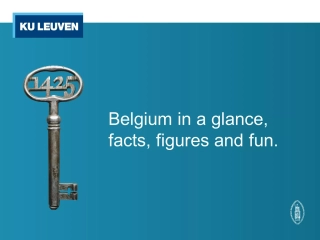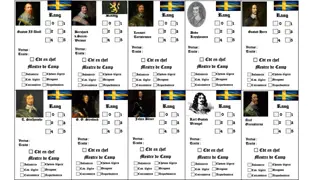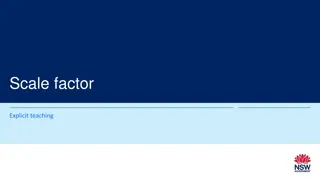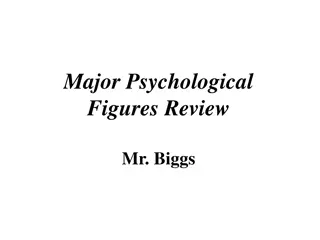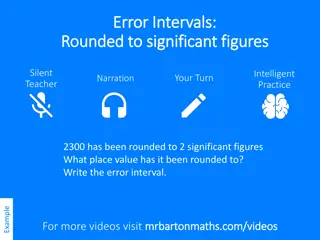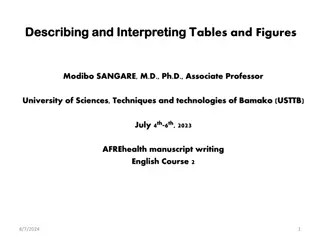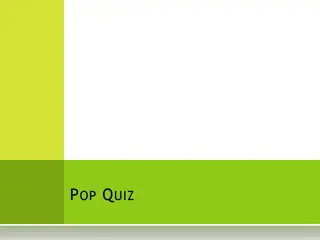Additional Figures
Indicated tumor cell lines were stained for PD-L1 expression using different antibodies. Mutations affecting binding to PD-L1 were analyzed. ELISA binding assays and cytotoxicity tests were conducted to evaluate antibody efficacy.
Download Presentation

Please find below an Image/Link to download the presentation.
The content on the website is provided AS IS for your information and personal use only. It may not be sold, licensed, or shared on other websites without obtaining consent from the author.If you encounter any issues during the download, it is possible that the publisher has removed the file from their server.
You are allowed to download the files provided on this website for personal or commercial use, subject to the condition that they are used lawfully. All files are the property of their respective owners.
The content on the website is provided AS IS for your information and personal use only. It may not be sold, licensed, or shared on other websites without obtaining consent from the author.
E N D
Presentation Transcript
Additional Figures Li et al.
Figure S1 A204 HCC827 H292 M1H1 LY3300054 Indicated tumor cell lines were stained for PD-L1 expression (red histogram) using either FITC-conjugated anti-PDL1 antibody M1H1 (top row), or AF488- conjugated LY3300054 Ab (bottom row); corresponding isotype controls shown with black dotted line.
Figure S2 The mutation N69H fails to rescue the binding of LY3300054 to dog PD-L1-Fc even though SEC demonstrated that its structural integrity is comparable to that of the wild-type or mutant K63 N.
Figure S3 1.25 B 1.25 A A bsorbance @ 450nm A bsorbance @ 450nm 1.0 1.0 0.75 0.75 0.5 0.5 0.25 0.25 0.0 0.0 1 0.1 0.001 0.01 1 0.1 0.001 0.001 h u -P D -L 1-F c varian t [n M ] h u -P D -L 1-F c varian t [n M ] ELISA binding of immobilized LY3300054-Fab (Panel A) and immobilized S70-Fab (Panel B) to in-supernatant (un-purified) human-to-murine mutation N63Q ( ), human- to-murine mutation H69A ( ) and ( ) wild type hu-PD-L1-Fc. In (A) and (B) the binding of the supernatant and its content to the ELISA plate was negligible - No immobilized Fab ( ). hu-PD-L1-Fc variants were transiently expressed in HEK293 cells and their corresponding in-supernatant concentrations were estimated via the ProA Octet sensors. Expression media was used to normalize the highest concentration of all the hu- PD-L1 variants to 100 ng/ml (1 nM). A gradient of 2 dilutions was utilized in these ELISAs (Technical replicates: 2, biological replicates: 2). The ELISA plates were detected with goat anti-human Fc F(ab )2-HRP conjugate. N63Q and not H69A abrogates the binding of hu-PD-L1-Fc to immobilized LY3300054-Fab. Immobilized S70-Fab binds indistinguishably to the human PD-L1-Fc and its two human-to- mouse mutants. The uncompromised binding of the S70-Fab in (B) demonstrates that the structural integrity of the mouse-to-human mutants was not altered.
Figure S4 A B The HEL: PD-L1+ cell line HEL was used in both assays, Anti-CD20 antibody rituximab (wild type IgG1) and effector- function ablated Rituximab (Rituximab-Fc null) were tested as positive and negative controls in each experiment using the CD20+ Wil2-S cell line. Panel A: Antigen-dependent cell- mediated cytotoxicity (ADCC) assay. Panel B: Complement dependent cytotoxicity (CDC) assay.
Figure S5 A C B 2000 1600 150 1500 1200 1000 800 125 800 500 100 TNF 400 600 IL -2 75 IL -6 300 400 50 200 200 100 25 0 0 0 O KT3 TG N1412 LY3300054 O KT3 TG N1412 LY3300054 O KT3 TG N1412 LY3300054 E D 2500 15000 10000 2000 5000 800 5000 600 4000 IL -1 IFN 3000 400 2000 200 1000 0 0 O KT3 TG N1412 LY3300054 O KT3 TG N1412 LY3300054
Figure S5: Bulk human PBMCs from 11 individual donors (indicated by unique symbols, were independently co-incubated in vitro for 24 h with serial dilutions of LY3300054, HuIgG1-EN, anti- CD3e (OKT3), or TGN1412 ranging from 0.1 g (1 g/mL) to 10 g (100 g/mL). Cytokine release into culture supernatants was measured by Luminex 21-plex assay. Shown are data for TNF- (A), IL-1 (B), IL-6 (C), IFN (D), IL-2 (E), and release expressed as fold-change relative to HuIgG1-EN; values for the HuIgG1-EN assays ranged from 1 to 100 g/ml. Biological replicates for individual donors were excluded if a difference of > 10-fold was observed. Vertical bars represent the mean SEM.
Figure S6 OV79 H292 HCC827 HLA Class I Expression HLA Class I expression on indicated tumor cell lines was determined using an APC-conjugated pan Class I antibody W6/32) with corresponding isotype control shown with black dotted line.
Figure S7 A C p value p value - + - + Log2FC Log2FC B p value - + Log2FC
Fig S7: Gene expression analysis of spleen (Panel A), peripheral blood cells (Panel B) and bone marrow (Panel C) was performed using QuantiGene (A and C) or NanoString nCounter Human Immunology panel (B). Volcano plots show Log2 fold-change of gene expression in the LY3300054 treated group compared to control group. The highlighted circles correspond to DEGs that display fold-change > 1.7 (black solid vertical line) and p value < 0.05 (horizontal dotted line). Circle sizes are proportional to the level of expression in LY3300054 group. One-way ANOVA was used for statistical analysis.
Figure S8 A B p value p value - - + + Log2FC Log2FC High-content gene expression profiling of HCC827 (Panel A) and NCI-H292 (Panel B) tumors collected at day 53 (A) and day 15 (B) post treatment initiation was performed using a custom-made QuantiGene Plex panel. Volcano plots show Log2 fold-change of gene expression in the LY3300054 treated group compared to control group. The highlighted circles correspond to differentially expressed genes that display fold-change > 2 (black solid vertical line) and p value < 0.05 (horizontal dotted line). Circle sizes are proportional to the level of expression in LY3300054 group. Two-way ANOVA (A) and one-way ANOVA (B) were used for statistical analysis. (PPTX 1148 kb)


